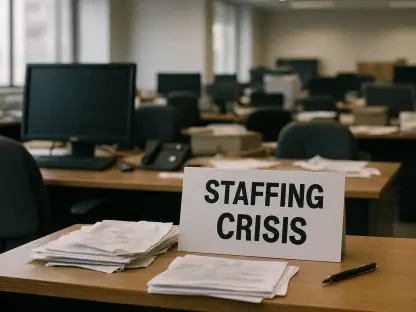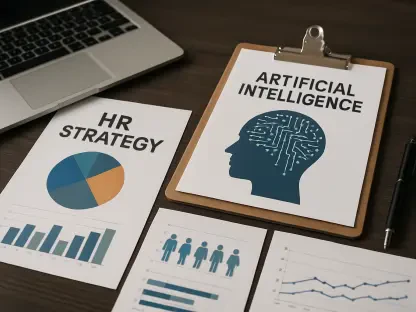In today’s rapidly changing professional landscape, many employees face a world where traditional job expectations no longer suffice, making engagement and personal growth essential. The modern workforce is characterized by a profound shift towards meaningful work that aligns with personal values and organizational purpose. This evolving scenario demands that both employers and employees adapt to foster environments where talents are not only utilized but celebrated. As technology continues to evolve and redefine roles, employees now seek empowerment, purposeful engagement, and a sense of belonging within their workspaces. Understanding these needs is key to unlocking their full potential.
Embracing Technological Transformations
Technology as a Catalyst for Creativity
The role of technology in today’s workforce extends far beyond practical applications, acting as a catalyst that fuels creativity and learning on unprecedented scales. Modern leaders are now tasked with leveraging technology not simply as tools for efficiency but as human amplifiers that encourage thoughtful innovation. This evolution has resulted in a dynamic workforce seeking more than task completion—employees want to contribute meaningfully, utilizing technology to develop novel solutions and ideas. As technology intertwines with workplace functions, the challenge lies in using it to amplify human creativity and provide pathways for continuous learning, ultimately enriching personal and organizational growth.
With employees facing rapid technological changes, continuous learning becomes imperative. The pace of technological advancements means skills can become obsolete, potentially hindering career growth unless addressed through persistent education and training opportunities. Many successful organizations today recognize this need, incorporating professional development resources that support employees in their quest for new skills and knowledge. When businesses invest in personal growth through technology, they not only keep pace with innovation but also empower their teams to evolve with the changing landscape.
Adapting to Flexible Work Structures
The rigidity of traditional work hours is slowly giving way to flexible structures that prioritize personal needs alongside organizational goals. This shift recognizes that employees are more productive when they have agency over their work schedules, tailored to suit their unique lifestyles. The flexibility to choose when and where to work allows individuals to manage their time efficiently without compromising the quality of output. Employers are beginning to value results over the traditional clocking-in system, accommodating diverse workplace scenarios that prioritize employee well-being. Such adaptations mark a significant shift towards a more inclusive, human-centric approach in today’s workforce dynamics.
Flexibility is not merely about enabling remote work; it extends to creating spaces where employees feel comfortable balancing work with personal life commitments. This approach fosters an environment of trust and respect, where employees are judged on the merit of their contributions rather than the rigidity of their hours. As employees demand personalized solutions, leaders should focus on developing ecosystems that uphold flexibility, allowing team members to foster genuine work-life harmony. The advent of this flexible culture in workplaces has been instrumental in enhancing employee satisfaction, productivity, and retention, ensuring the organization’s long-term success.
Purpose and Psychological Safety
Driving Meaningful Engagement
Purpose-driven work emerges as a vital component, emphasizing the significance of employees understanding and valuing the broader impact of their roles. For many, the paycheck-centric motivation has taken a backseat to the desire for meaningful work that contributes to something larger. This shift towards purpose-driven endeavors encourages employees to find fulfillment, aligning personal values with those of their organizations. Employees who understand the impact of their roles tend to be more motivated, committed, and engaged, resulting in higher productivity and innovative contributions. Organizations that foster such purpose are likely to stay competitive in attracting talent looking for more than just financial incentives.
Building a culture where psychological safety prevails is essential to encourage innovation and collaboration among team members. Psychological safety refers to an environment where individuals feel safe to express ideas, take risks, and be themselves without fear of judgment. This aspect of workplace culture is crucial for employees striving to make meaningful contributions. When employees are comfortable voicing their thoughts, it invites diverse perspectives and ideas, cultivating a fertile ground for innovation. Leaders have a significant role in fostering this environment by actively listening, valuing diverse viewpoints, and promoting open communication channels.
Continuous Learning and Leadership
In a world of rapidly evolving skills, continuous learning within organizations ensures employees remain current and competent in their fields. This commitment to perpetual development goes beyond annual checklists, embedding a culture of lifelong learning into the organizational fabric. By providing resources such as workshops, courses, and mentorship programs, organizations demonstrate their commitment to staying ahead of the curve. As new skills become necessary, employees who are encouraged to learn can better improve their roles, adapting to emerging market trends. This approach not only benefits personal growth but directly impacts organizational innovation and success.
In reimagining leadership, a balance between emotional intelligence and strategic insights stands out. Modern leaders are encouraged to integrate both head and heart, showcasing empathy, gratitude, and inclusivity alongside traditional leadership skills. Upcoming research suggests that only a select group of leaders successfully meet these evolving expectations, leading teams that are engaged, motivated, and well-equipped to face dynamic challenges. These leaders set a precedent in creating environments where employees thrive, ensuring their enterprises are well-prepared for future demands.
Paving the Way Forward
In the fast-evolving professional world today, employees encounter an environment where traditional job expectations are inadequate, making engagement and personal development vital. The workforce is undergoing a major transition towards work that not only holds meaning but resonates with personal principles and aligns with the broader organizational goals. This transformation requires both employers and employees to adjust in ways that cultivate workplaces where skills aren’t simply applied but are also appreciated and applauded. As technology continues to advance and redefine job roles, employees are increasingly desiring empowerment, meaningful engagement, and a strong sense of belonging in their work settings. Recognizing and responding to these desires is crucial for tapping into their full capabilities. Organizations that understand these evolving needs can enhance productivity and create environments where employees feel valued and thrive, resulting in sustained growth and success.









